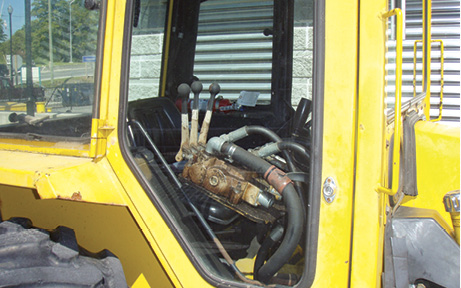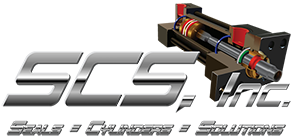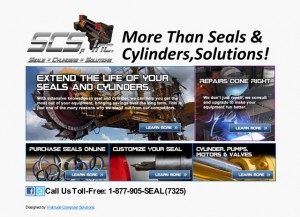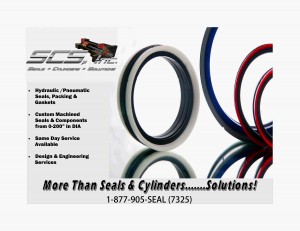Safety Focus: Hydraulics and the Environment
Advertisement:
Hydraulics and the Environment

Posted on 08/04/2014 by Fluid Power Journal in Safety with 2 Comments
safety1
Component failure is often the root cause of hydraulic spills to the environment. In this article, we won’t discuss environmentally friendly fluids, but instead lean more toward the effects of failure and prevention.
Spill control methods for hydraulic failure are containment, adsorbents, and establishing protocols. Stepping back to the root cause is where we should focus in an effort to prevent failure and the use of these post controls. Hydraulic component failure is inevitable if you let it happen, however, it is also preventable. A hydraulic component will never get more reliable after its first use; in fact, the moment it is put to use, its life expectancy declines. There is a whole profession and organization that focuses on component and machine reliability, and these reliability experts convey that knowledge and comprehensive maintenance procedures will reduce failures by 90%. Every minute in North America, a hydraulic hose will fail, expelling hydraulic fluid to the surrounding environment. Even if the lost fluid is contained and the area is remediated, the lost fluid should never be returned to the system due to contamination.

safety2
This lost fluid, however, can be recycled, but in most cases, the fluid and adsorbents end up in landfill sites for natural breakdown. There is really no upside to component failure and release to the environment. HSAC recently released a safety poster titled “Near Miss,” which simply states: “If an injury did not result…it’s a reportable near miss.” The image on the poster is a failed hose assembly. We believe recording hydraulic hose failures in the near-miss category will eventually bring this phenomenon real serious attention, as it should! Hydraulic component manufacturers are very good at explaining reliability and the requirements of maintaining a failure-free system.
These pointers from manufacturers become industry best practices, which we hope will eventually be adapted into a standard. For more information on containment, adsorbents, biodegradable fluid, spills reporting, and effects on the environment, contact [email protected].
Question: I work in a mine running a piece of equipment with many hydraulic hoses in a “track” system. The hoses in the “track” and elsewhere show damage to the outer covers, and the braided reinforcement wire is exposed and, in many cases, badly corroded. Could you please help me maintain safety in my workplace by providing your input into this situation?
Answer: When the outer shell of a hydraulic hose has been damaged or has begun to break down, exposing the wire reinforcement, the steel wire immediately begins to corrode. The inner layer of rubber has no strength without sound wire reinforcement. Any hoses that are damaged should be replaced.
There is no act or standard that states you must replace the hose, however, legal repercussions can result in the event of a failure causing injury or death, including property and environmental damage. Liability may fall on the persons, supervisor, and company responsible for using components that are visibly damaged where the manufacturer and industry best practices state that they are not safe. A “fraying” hose is not safe and can fail at any time. The overall costs are much higher when failure occurs.

safety3
* The above articles have been reprinted with permission. Images courtesy of Hydraulic Safety Authority of Canada, Inc.
For more information
The mission of Hydraulic Safety Authority of Canada Inc. (HSAC) is to provide proactive health and safety awareness programs specific to hydraulic systems and components. These programs provide a guideline for companies to follow as they show the necessary due diligence required for providing a safe work environment and improving their existing health and safety systems. Contact by phone: 416-363-7272; e-mail: [email protected]; web: www.hsac.ca. The IFPS is now an authorized provider of HSAC’s Hydraulic Safety Awareness e-learning courses.
.
Determining Root Causes
Posted on 04/28/2014 by Fluid Power Journal in Safety with 0 Comments
![]() safety-iconWe have read hundreds of incident reports in which some of the injuries were minor to several incidents that resulted in multiple fatalities. There are some very good investigators out there, however, there are very few investigators who are experienced enough with hydraulic systems and components to drill deep into the root cause. Language is a critical key in relaying the information to the reader, which could be anyone from the manufacturer of the equipment to the prosecuting attorney. Technical terms must be correct and expanded to the length necessary for the reader to understand. A well-written report made up of many details and contributing factors will greatly assist in preventative actions.
safety-iconWe have read hundreds of incident reports in which some of the injuries were minor to several incidents that resulted in multiple fatalities. There are some very good investigators out there, however, there are very few investigators who are experienced enough with hydraulic systems and components to drill deep into the root cause. Language is a critical key in relaying the information to the reader, which could be anyone from the manufacturer of the equipment to the prosecuting attorney. Technical terms must be correct and expanded to the length necessary for the reader to understand. A well-written report made up of many details and contributing factors will greatly assist in preventative actions.
“Is this the actual root cause?” Many factors lead to an incident, and the use of the fish bone diagram is an effective assist tool in assembling the facts. Generally speaking, a hydraulic incident will most likely, but not always, have a combination of the following contributing factors: component failure, failure to control hazardous energy, worker disregard, and unsafe machine design. Being responsible for the best outcome, an investigator should always dig and dig, but foremost the investigator should always utilize subject matter experts.
If a root cause investigation was only conducted by one person, we would have concern about how comprehensive the report may be. Company policy on incident investigations should include a “process of involvement,” meaning a minimum number of investigators and the knowledge each individual brings to the team. The team approach ideally is the most effective way to dig into root cause.
Hydraulic Safety Program
Hydraulics is simply a means of transmitting energy, and like all other forms of energy, there are associated hazards. Hydraulic hazards can cause injury, equipment damage, and environmental damage. Eliminating hazards and reducing risk requires a comprehensive process.
HSAC recently assembled a complete hydraulic safety program, which is a process designed to eliminate hazards, reduce risk, and make personnel knowledgeable. This combined process is the most effective way to protect workers, protect equipment, and protect the company from hydraulic hazards. Eliminating hydraulic hazards can be achieved by first understanding the causes and effects. Next is identifying hydraulic hazards, then integrating controls and devices, followed by developing specific procedures and training.
An Achieved Hydraulic Safety Program will contain some of the following elements:
◾Integrated safety devices and components to execute energy control for task completions
◾Integrated safety devices and components to protect equipment, environment, and personnel
◾Developed procedures for energy control for specific tasks
◾Awareness training and safe procedure training
◾Documentation for inspection, hazard assessment, and protocol
Many elements are combined to build a full hydraulic safety program that will greatly reduce risk, and maintain reliability and long-term repeatability for equipment and personnel.
Question: Every time our machine cycles, the hydraulic hoses flex considerably, so I know there is a lot of energy being transmitted through them. How do I eliminate risk for my personnel who are working close to the hydraulic hoses?
Answer: True, there is a high risk when exposed to hydraulic hoses. A hydraulic hose conducts energy, which is fluid that does work, and the resistance to flow generates pressure. The flexing of the hose is a result of spikes in pressure caused by resistance to flow. Should hose failure occur, the risks are impact from hose whip; fluid injection injuries; atomized fluid, which is highly flammable; associated equipment failure; slip hazards; and burns. Hose sleeves designed for safety, whip restraints, shielding, and guarding will reduce risk for workers. Failure can be reduced
through training, inspections, and proactive maintenance programs. The Earth Moving Equipment Standard ISO 3457 and EN 474-1 state that “Hydraulic hoses containing fluid with a pressure of more than 5 MPa (50 bar) and/or having a temperature over 50°C, and which are located within 1 meter of the operator, shall be guarded.” Every effort must be made to protect workers from hydraulic hose hazards.

safety 1
Question: Our steel mill produces hot roll coils of flat stock, and everything is operated by hydraulics throughout the mill. When we shut down a machine to do maintenance, we isolate the hydraulics to the machine using the ball valves, which is the method we use for lockout. Is this a safe method?
Answer: Isolation ball valves are commonly used where the hydraulic power unit is used to supply hydraulic power to many machines throughout the mill. Hydraulic supply, return, and drain lines to each circuit can be isolated while allowing other machines to function. There are many issues that increase risk with this method of isolation.

safety 2Let’s start with leakage. Ball valves are designed having seat seals that can fail; therefore, the control of hazardous hydraulic energy would be lost. Next issue is lockable ball valves; the locking mechanism must not allow any swing of the valve handle. I’ve seen small padlocks locked into mechanisms where it was possible to swing the handle enough to allow the valve to flow. Next issue, some bleed circuits for energy control in the isolated circuit may be affected if the circuit is not allowed to vent energy back to the reservoir if the drain or return line is blocked. Redundancy of isolation ball valves will reduce risk if this method of energy control is used.
Also, it is very important that you verify zero hydraulic energy (flow creating pressure) beyond the isolation points. This means constant verification or a scheduled verification based on lapsed time over the period of the lockout. Be sure that the lockout procedure explains the importance of verification when using ball valves as a method of energy control.
* The above articles have been reprinted with permission. Images courtesy of Hydraulic Safety Authority of Canada, Inc.
For more information: The mission of Hydraulic Safety Authority of Canada Inc. (HSAC) is to provide proactive health and safety awareness programs specific to hydraulic systems and components. These programs provide a guideline for companies to follow as they show the necessary due diligence required for providing a safe work environment and improving their existing health and safety systems. Contact by phone: 416-363-7272; e-mail: [email protected]; web: www.hsac.ca.
.
The IFPS Promotes Safe Practices for Industry Professionals
Posted on 08/20/2013 by Fluid Power Journal in Features, Safety with 0 Comments
safety equip
The International Fluid Power Society (IFPS) believes that implementation of safety procedures is paramount in all fluid power systems, the electrical and electronic controls that guide them, and all associated technologies. The IFPS recommends, in every circumstance, factory, piece of mobile equipment, or application of any fluid power product or its controls, that every employee and employer is responsible to know, understand, and practice the safety policies and procedures already in place.
Advertisement:
Follow Safe Practices
◾Prevention is always the best treatment. Know the proper operation and maintenance of all equipment.
◾Comply with all rules and requirements established by the particular manufacturer and site where the work is being performed.
◾Use personnel protective devices: face shields or safety goggles, earplugs or covers, and safety shoes and clothing suitable for the environment. Wear gloves when handling hot materials or to protect hands against hot surfaces.
◾Consult manufacturers’ safety specifications for each machine. Take the responsibility to improve the safety standards whenever an opportunity presents itself. No one knows the equipment better than the people who work with it daily—they are the most important ones to improve that equipment’s safety!
Be Prepared in the Event of a Fluid Injection Injury
Doctors may not be experienced in treating injection injuries and therefore may underestimate the urgency of this type of injury. It can take hours to locate a qualified medical professional. Your best chance at proper treatment is to locate a hospital or hand surgeon who is experienced with this type of injury in advance and have contact information readily available. Your company should be prepared to have the Material Safety Data Sheet (MSDS) available whenever an injury occurs.
Safety Card
The “Know Before You Go” theory is vital to receiving proper treatment, so the IFPS has issued Injection Injury Safety Cards to all of its members and certified non-members. The safety cards provide you with five critical pieces of information for doctors and emergency medical technicians in treating injection injuries:
1.What type of fluid? (Provide the Material Safety Data Sheet.)
2.What is the amount of fluid injected?
3.What was the pressure of fluid injected?
4.What is the spread of injected material?
5.How much time has lapsed between injection and treatment?

Since pre-planning is recommended, there is blank space on the safety card that should have the name and phone number of the doctor or medical facility in your area that is experienced in treating injection injuries. In the event of an injury, you must IMMEDIATELY SEEK MEDICAL CARE, and having this critical information readily available should help medical professionals treat the injury.
IFPS-Safety-Card
Resources
Critical safety information can now be found in every IFPS study manual. For additional safety education, an archived online presentation, “In the Line of Fire: Cause and Dangers of Fluid Injection Injuries,” presented by Dan Helgerson, CFPAI, is available to the public, as well as a four (4)-page general safety document, “Safety is Everyone’s Responsibility.” All of these safety resources can be found at www.ifps.org.
The information expressed above is not medical advice or a substitute for a professional medical opinion. The International Fluid Power Society (IFPS) provides this information for your convenience, and IFPS does not assume any liability that may arise from its use or nonuse. IFPS does not verify that this information is valid, current, or suitable for any situation. Consult a medical professional immediately in the event of an emergency.

It’s Never Too Late To Be Safe
Posted on 03/22/2013 by Fluid Power Journal in Safety with 0 Comments
The new year is often a time when people reset their goals, start fresh, begin a new chapter, or take any number of other actions to start over. We call it “resetting the counters.” Many organizations make the new year a time to set forth company-wide safety goals. Some companies set a goal of “X” incidents, signifying a reduction in OSHA-reportable injuries over the previous year. Others set goals of “zero injuries” or “zero incidents.” These goals are great to motivate people to work safely, yet sometimes the goals seem too lofty for employees.
A Personal Goal for Safety
Another way to approach safety goals is to ask employees to set their own personal targets. Within their workgroup, employees can share their personal targets for zero-injury days, for conducting pre-job briefings or inspections, attending safety meetings, or any other targets that apply to your company. Consider this: most employees are going to target zero injuries for every workday, and regardless of the number of employees in the organization, the approach will work.
A team of employees can share their individual goals and develop a team aggregate goal. This will help them be accountable to one another and to look out for each other. The key is to keep the goals personal and to have the employees set the goals themselves. Your organization may have a specific area of focus to reduce injuries; for instance, you may be striving to reduce hand injuries or slips, trips, and falls. If so, engage individual employees and workgroups by asking them to develop personal goals for these areas of emphasis. You may be surprised by the results.
Promoting Success
As you consider the goal that you, other individuals, and work teams set, determine what it will take to be successful. If your goal is to perform a pre-job briefing for each job, what will you need to accomplish that goal? Maybe you need to take steps to ensure that a pre-job checklist or form is readily accessible and easy to use. Perhaps you or others need some training on how to conduct the briefings. If your goal is to make each job injury-free, you may need to work to understand the common hazards associated with each task and how to control them. Take time when you set your goal to understand what might get in the way of success and what you can do to overcome the barrier. Also, take time to understand what you are already doing that will give you the momentum to succeed.
The Best Goal of All
The very best safety goal a person or work team can adopt is “Nobody Gets Hurt.” This goal can be the target for every year, every day, and every job. It’s a goal that you may want to use for yourself or to suggest to your team. When you think about it, the goal can help you look out for yourself and others, and is a way to encourage others to look out for you. And this goal can be set any time of the year. You don’t have to wait for a new year to roll around. There is no better time than now to set this goal as your own.
Carl Potter is a board-certified safety professional (CSP) and is a certified management consultant (CMC) who may be contacted at [email protected].
Deb Potter, Ph.D., is a certified management consultant (CMC) specializing in safety management consulting for high-risk industries who may be contacted at [email protected].
.
Fluid Power Journal is the official publication of This Article.
Advertisement:






